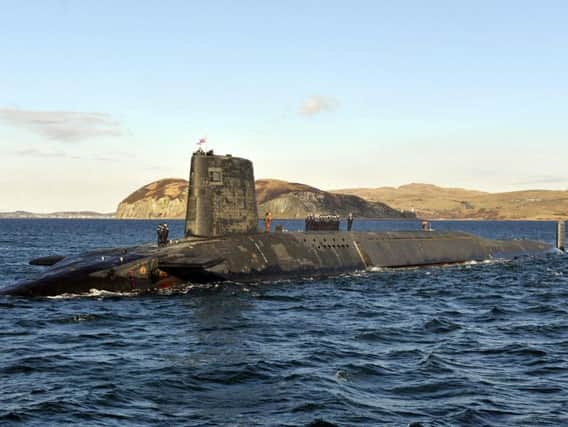Election explained: How long would it take to remove Trident nuclear weapons from Scotland?


It would also be one of the bedrock policies of an independent Scotland and was a major issue in the 2014 referendum campaign.
The UK's current Trident nuclear deterrent consists of four Vanguard -class submarines based at the Faslane Naval base on the Gare Loch which can carry up to 16 nuclear nuclear missiles, although multilateral disarmament drives mean they now carry far fewer. At any given time, at least one of the subs is out at sea, giving the UK its Continuous at Sea Deterrent (CASD). The actual warheads - the nuclear bomb part of the missiles - are not based at Faslane, but over at nearby Coulport on Loch Long.
Advertisement
Hide AdAdvertisement
Hide AdNicola Sturgeon has indicated that she would want to see the weapons removed as soon as is safely possible. But how long would this take?
In practice, it could be done quite quickly. If the head of an independent Scotland was to order the subs out, Former Royal Navy Admiral Baron West has previously made it clear that the submarines could simply moved to another base in the UK. The Devonport base in Plymouth has been touted previously as a replacement, although it lacks the deep water advantages of Scotland's west coast.
Removing the warheads may be more awkward. There are believed to be around 200 warheads based in Couport and would need to be transported south in road convoys. They regularly undertake this journey to be serviced at the the MOD's Atomic Weapons Establishments (AWE) at Aldermaston and Burghfield in Breskhire. The difficulty about storing them here on a longer term basis would centre on the lack of storage capacity and the fact that it is around a 170 mile drive from Devonport.
Perhaps that might not be the problem of the First Minister of an independent Scotland. But it's worth noting that in a post-independence scenario, Scotland is likely to be involved in complex negotiations with the UK about, among other things, the split of UK military hardware and equipment. Holyrood ministers will be keen to secure Scotland's share of the current UK fleet. In 2014, the SNP's Scotland's Future manifesto independence envisioned Scotland getting two frigates from the current navy fleet, among other vessels, as well as four counter measure vessels and four to patrol boats. The likelihood is that realpolitick would take over and a phased withdrawal would be agreed The SNP have steadfastly refused to put a timescale on it. Even Alex Salmond admitted during the last referendum, that the issue would not be addressed until the first elections of an independent Scotland - which would have been two years after independence itself.
Baron West has indicated it would take five to seven years to build a new base south of the border, while other experts indicated that it could even take up to 20 years. The latter may seem unpalatable for some hardline anti-nuclear adherents, but the SNP is keen to remain in NATO after independence which would likely mean a more accommodating approach is required on Trident which would still form a key part of the western defence alliance.